Issue 6.1
Greetings and welcome to issue 6.1 of Panorama. We launch this issue mindful that the lives of our readers, contributors, editors, and staff have been upended in recent weeks and months by the commingled threats of COVID-19 and an abrupt downturn in the economy, and the increased visibility of police violence against Black people resulting in mass calls to action.
As scholars of American history, art, and culture, we know that systemic racism was intentionally constructed, first as a support and then as a successor to slavery. As a result, communities of color have been disproportionately impacted by the legacies of institutional abuse, violence, extrajudicial murder, and—more recently—by the novel coronavirus and the ensuing economic crisis. Our credo is #BlackLivesMatter.
On June 1, the Association of Historians of American Art issued a statement of solidarity with those demanding an end to police brutality; it called for justice for George Floyd, Breonna Taylor, Ahmaud Arbery, and the countless BIPOC (Black, Indigenous, and People of Color) individuals whose murders have been met by inaction, indifference, and intentional obfuscation, or have resulted in miscarriages of justice. As AHAA’s statement rightly asks, how can our work advance social justice?
While the content of this issue was settled upon months ago, we hope that it contributes to the important work of reflecting on the role art has played in perpetuating or resisting oppression in the United States, the Americas, and regions where the US has exerted its influence. As Americanists, we recognize that the art, architecture, and visual and material culture that we study (and, all too often, the narratives we write about them) can replicate, reenact, and reproduce the histories of inequality that undergird our society. Our task is urgent. We must diversify our classrooms, institutions, and programming; craft honest and meaningful mission statements that are followed by action; and support and write anti-racist scholarship. The time has come to abandon symbolic gestures, dismantle systemic inequalities, embrace critical race theory, and divert resources to projects that will break white supremacy’s hold on our field.
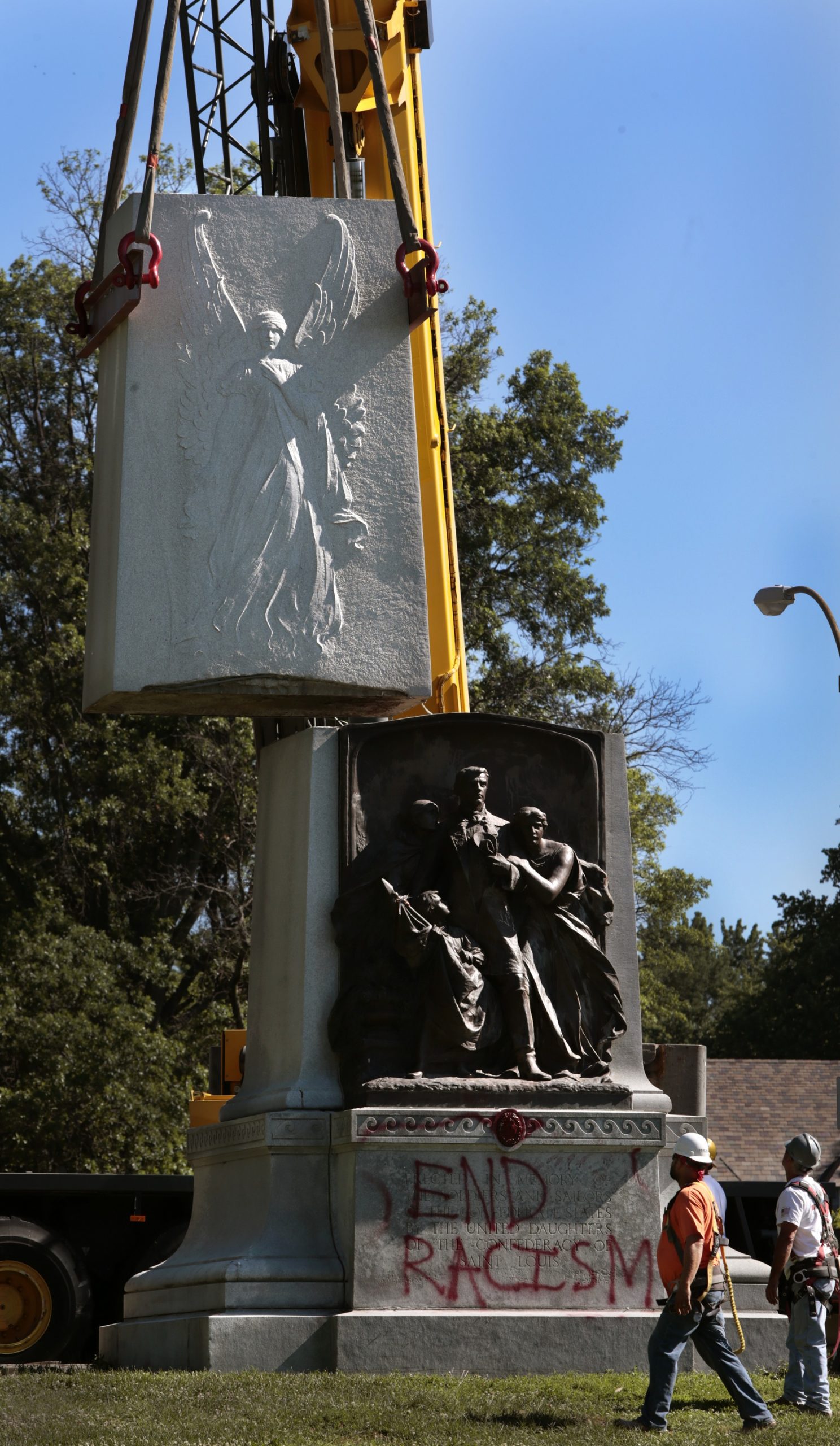
To that end, this issue features an important contribution to scholarship on Civil War monuments by Katherine Poole-Jones. By examining four monuments erected in one St. Louis, Missouri, park between 1876 and 1914, Poole-Jones reveals the way monuments to heroes of the Union and Confederacy marked changes in public memory and, sometimes, misrepresented community values. Poole-Jones concludes by discussing the controversies that erupted around the Confederate monument both when it was erected in 1914 and leading up to its 2017 removal (fig. 1). As she points out, resistance to Confederate monuments sometimes began even before they were erected. Poole-Jones’s article emerges as activists have forced state and local politicians to reckon with and denounce the intimidating, anti-Black messaging of these monuments.1 Recent calls to remove these monuments build upon generations of Black activism against racism and its symbols. Activists and city leaders in Birmingham, Alabama, worked in concert to remove public sculptures that glorify the Confederacy.2 Some change is more subversive, with protestors toppling Confederate monuments in Norfolk, Portsmouth, and Richmond, Virginia (fig. 2); Montgomery, Alabama; and Nashville, Tennessee; and vandalizing statues of Christopher Columbus, Juan Ponce de León, Juan de Oñate, and former Philadelphia Mayor Frank Rizzo.3 In some places, citizens are re-envisioning the civic memorial landscape. As Poole-Jones points out, we must “recover the stories and voices that have too often been ignored, to erect ‘counter monuments’” and create a more inclusive memorial landscape.
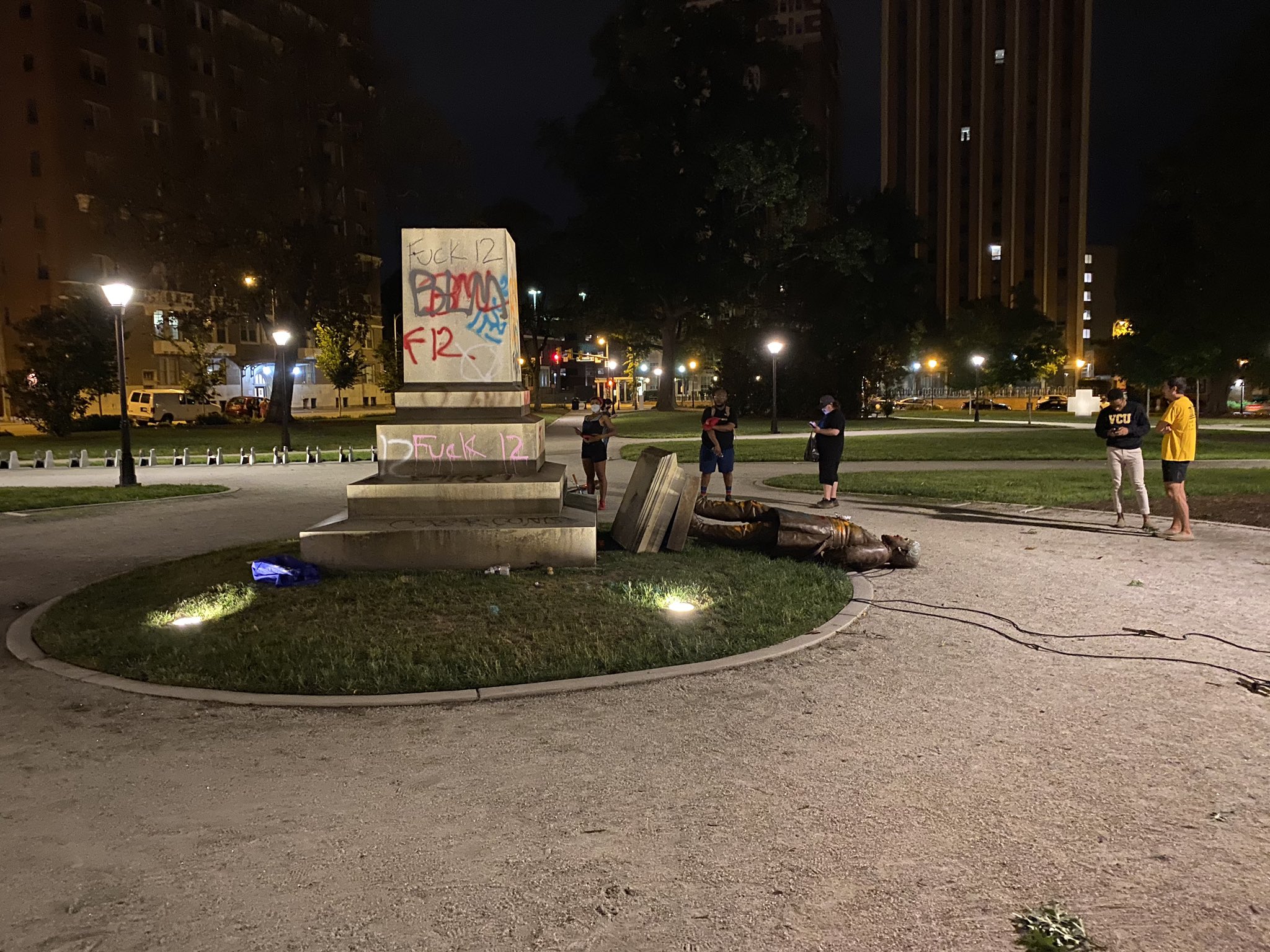
Sarah Beetham takes up this directive and identifies contemporary artworks that imagine kudzu as a force to overpower Confederate sculpture, like Aaron McIntosh’s Invasive Queer Kudzu project.4 In 2019, McIntosh staged this as a participatory installation (figs. 3, 4) at 1708 Gallery in Richmond, demonstrating the significance of community in shaping conversations about public monuments.5 The essays in our “In the Round,” focused on Southern art from the Civil War period to the contemporary, span eight southern states and examine Lost Cause mythology and its legacies, Afro-Creole patronage in Reconstruction-era New Orleans, the role of women in shaping southern arts education, Appalachian modernism, the “problem of Texas” in canon formation, contemporary and historic Southern road photography, resistance in Freedom Riders’ mugshots, the subversive practices of the Bessemer School of artists, and contrasting images of South Carolina rice production. Collectively, the authors question how art histories are written and informed by the politics of our field; what and who gets left out of the stories we, as art historians, tell; and how art might radically imagine future potentialities.
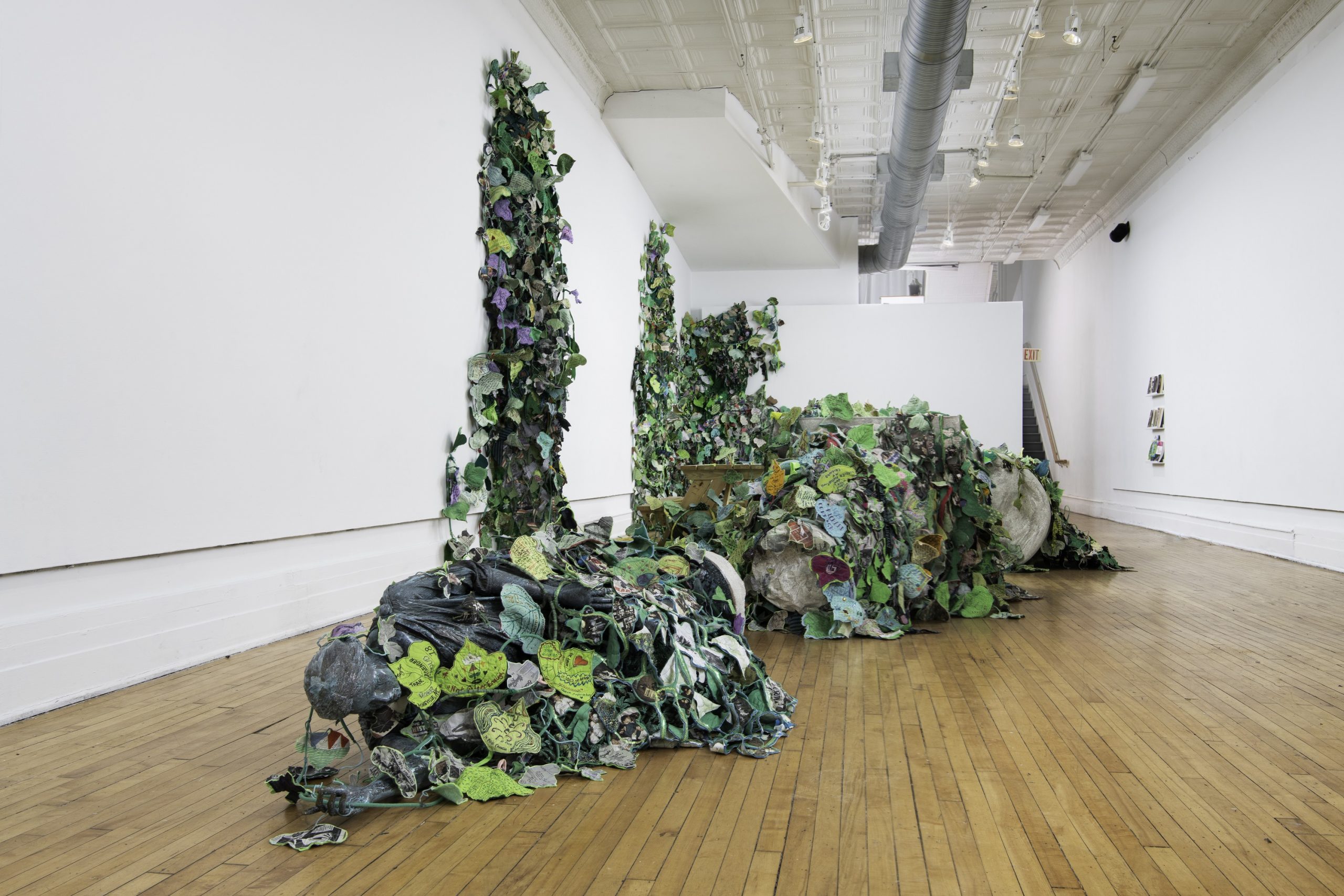
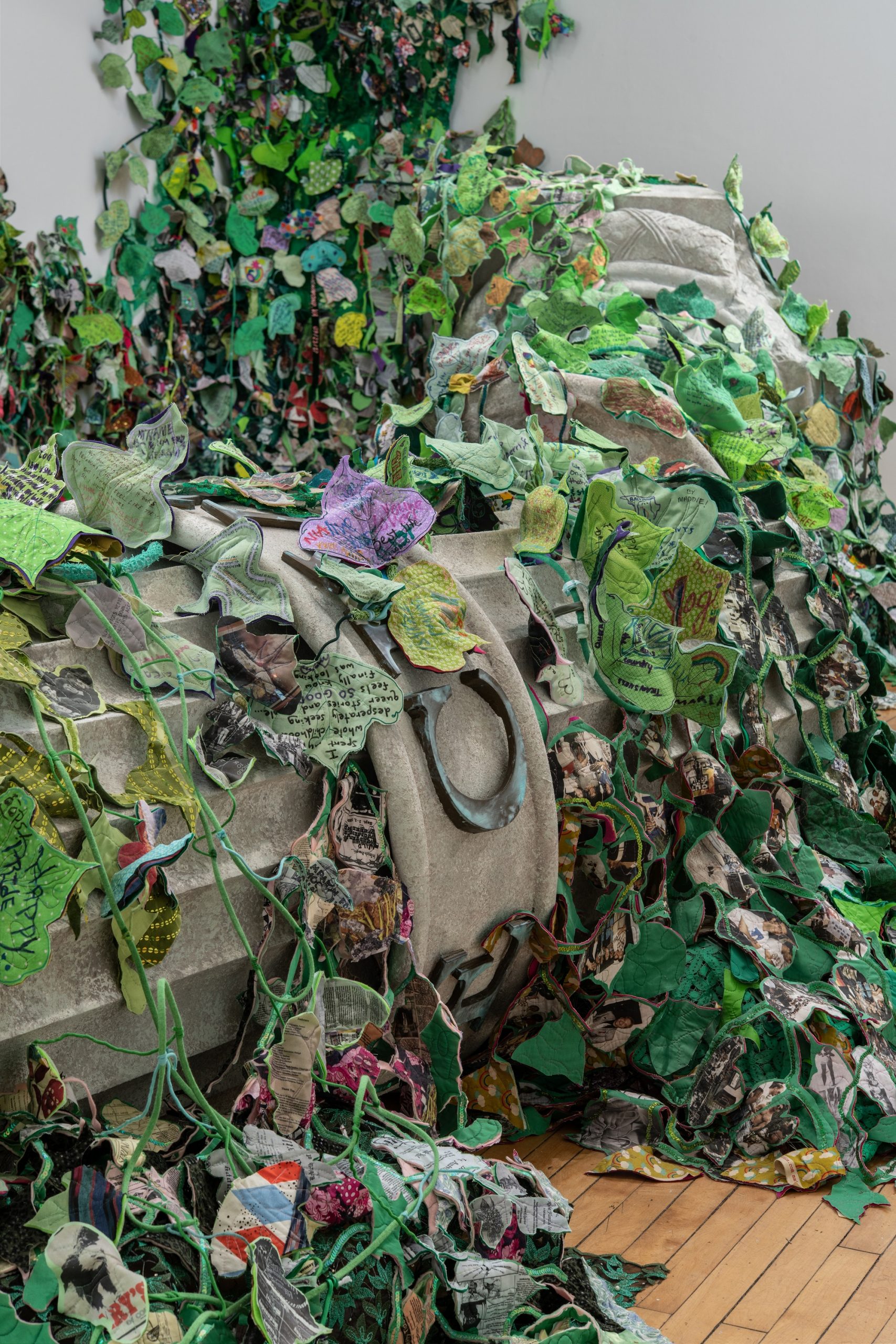
Also thinking about disciplinary decentering, Maggie Cao guest-edited this issue’s “Bully Pulpit,” for which she invited six scholars—some of whom provide important interdisciplinary perspectives from outside the field of American art history—to explore the role of art in enacting and interpreting the US imperial project. Focused mostly on art made (or destroyed) in the 1890s and on the artistic legacies of that era of US expansion, the authors consider how art served US efforts to establish an empire, as well as local and Indigenous efforts to contest US imperialism in Hawai‘i, the Philippines, Central America, the Caribbean, and the US South. The authors raise significant questions, which point to the importance of future research on a topic that is well explored by historians but remains surprisingly understudied by art historians. The thorny histories of American imperialism force us, as scholars, to grapple with how we address our own roles in either replicating or challenging imperial power structures through our teaching, scholarship, and exhibitions.
In “Talk Back,” four readers respond to Laura Holzman’s “Bully Pulpit” on public scholarship and art history, which appeared in our previous issue. The authors thoughtfully consider the public face of our discipline in teaching and in the museum, and they explore how we might change the ways we address audiences in response to COVID-19 and the Black Lives Matter movement.
Additionally, we are publishing three excellent research notes on Donald Judd and engineering, the history of a ninenteenth-century “transnational” photograph, and Georgia O’Keeffe’s Abiquiu studio. Eight book reviews cover vision in antebellum America, iconoclasm and sculpture in New York City, American soldier monuments in France, the architecture of college campuses, sexual trauma in contemporary art, the life of Elaine de Kooning, and the art of Bill Traylor. Five exhibition reviews—spanning institutions from Maine and Minnesota to New York, Virginia, and Texas—address the impact of Edith Halpert on twentieth-century American art and consider the careers of San Francisco Bay–area artist David Park (1911–1960), Tlingit artist Nicholas Galanin (b. 1979), early nineteenth-century muralist and inventor Rufus Porter (1792–1884), and modernist Edward Hopper (1882–1967).
In planning exhibition reviews for this issue, we want to acknowledge the ways in which our museum colleagues have had to adapt and adjust to significant institutional challenges. We recognize that museum work has been significantly impacted by coronavirus closures and the resulting economic crisis. We also see news items that are destined to become museology case studies: directors’ voluntary salary reductions and donor fundraising to make staff payroll in some institutions, employee furloughs and layoffs in many others, and public debate about the impact of communicated support for the Black Lives Matter movement. In a future issue, we intend to address the pandemic’s impact on museum operations, highlight the innovative work undertaken—including the implementation of digital strategies—and grapple with the widespread effects of the pandemic on American life and culture.
Finally, we welcome some new members of Panorama’s editorial staff. We are excited to announce that Jacqueline Francis has joined the team of executive editors for a three-year term. An associate professor and chair of the Visual and Critical Studies Graduate Program at California College of the Arts, Jackie researches and writes about historical and contemporary US artists, focusing on those of African descent, and about racialization that is manifest in discourses of identity, difference, and power. Executive Editor Austen Barron Bailly stepped down in March due to her new position as chief curator at the Crystal Bridges Museum of American Art; we thank her for her service. We added three new section editors: Caroline Riley (University of California, Davis; Smithsonian American Art Museum) in Exhibition Reviews, Emily Burns (Auburn University) in Research Notes, and Amy Werbel (State University of New York, Fashion Institute of Technology) in Book Reviews. We are also thrilled that Diana S. Greenwald, assistant curator of the collection at the Isabella Stewart Gardner Museum, has agreed to serve as Panorama’s first Digital Art History Editor. In this role, she will develop digital projects for the journal and consult with authors and editors to publish DAH articles. Lastly, Johnathan Hardy joined the journal staff as Project Manager for our new venture, “Toward a More Inclusive Digital Art History,” generously supported by the Terra Foundation for American Art. We are extremely grateful to all of our contributors, section editors, and Managing Editor, who diligently contributed to this publication under extraordinary circumstances.
We release this issue on June 17, 2020, five years after a white supremacist attacked the Emanuel African Methodist Episcopal Church in Charleston, South Carolina. Nine African Americans were killed in the shooting; five people survived. It is not surprising that, in the ensuing years, the massacre has become a subject that artists explore.6 Works commemorate the martyred victims in realist portraiture and in street murals (fig. 5), denounce gun violence in bold prints and illustrations, reconfigure the Confederate flag in installations (fig. 6), performance art, and on social media, and celebrate the resilience of Black communities in the aftermath of racist terror (fig. 7).7
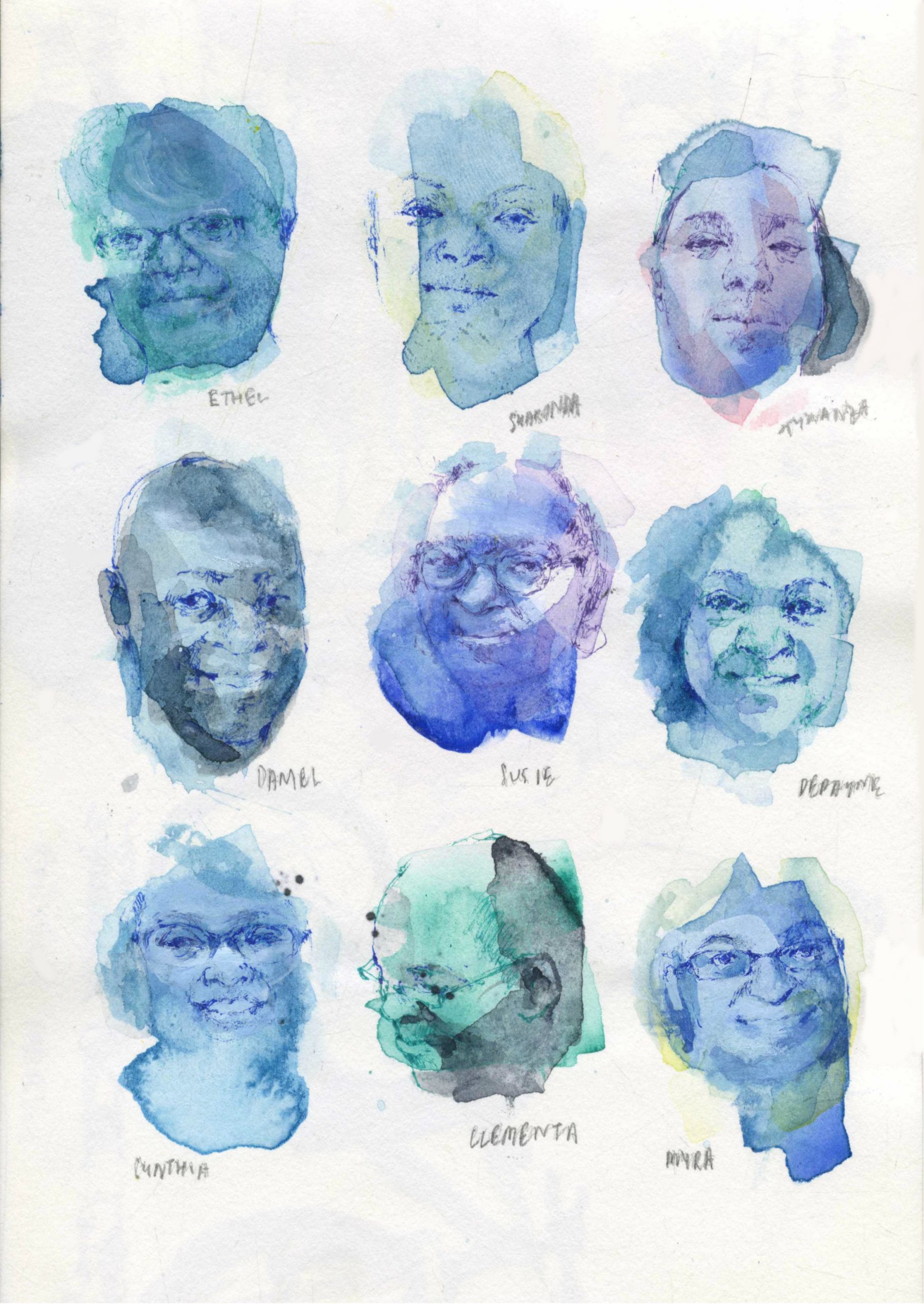
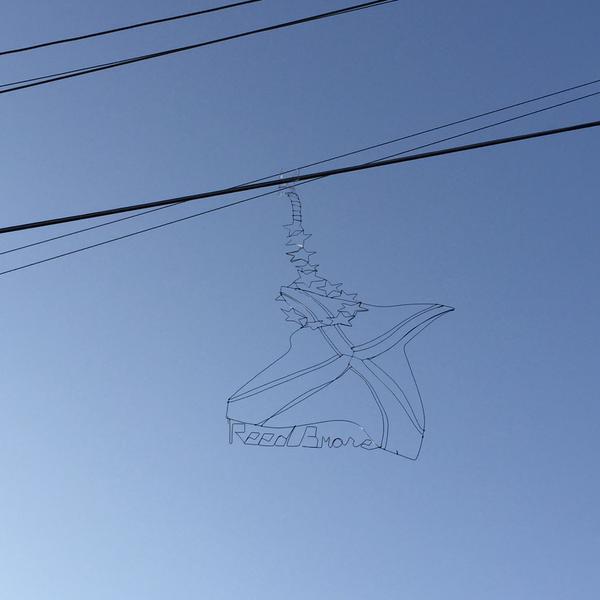
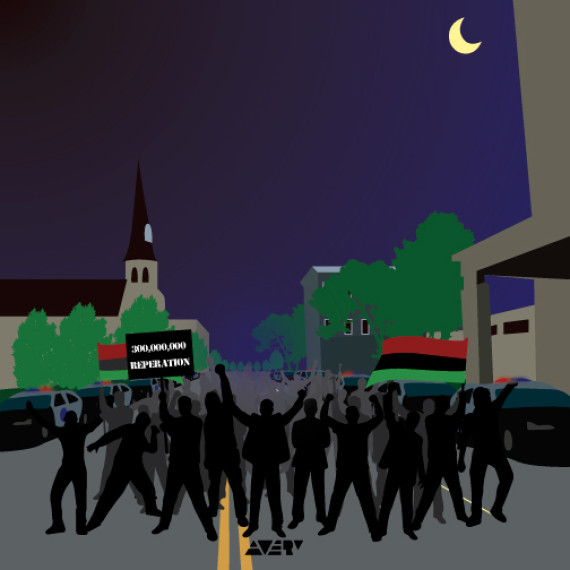
What remains to be seen is what we, as Americanists, continue to teach, research, write, curate, and archive. To invoke James Baldwin’s observation that “nothing can be changed until it is faced,” we know that our task is right before us.8
Cite this article: John Bowles, Naomi Slipp, Jacqueline Francis, “Editors’ Welcome,” Panorama: Journal of the Association of Historians of American Art 6, no. 1 (Spring 2020), https://journalpanorama.org/article/editors-welcome-6-1.
PDF: Bowles, Slipp, and Francis, Editors’ Welcome 6.1
Notes
- Sarah Mervosh, Simon Romero, and Lucy Tompkins, “Reconsidering the Past, One Statue at a Time,” New York Times, June 16, 2020, https://www.nytimes.com/2020/06/16/us/protests-statues-reckoning.html. ↵
- Colin Dwyer, “Confederate Monument Being Removed After Birmingham Mayor Vows To ‘Finish The Job,’” NPR, June 2, 2020, https://www.npr.org/2020/06/02/867659459/confederate-monument-removed-after-birmingham-mayors-vow-to-finish-the-job. ↵
- “List of monuments and memorials removed during the George Floyd protests,” Wikipedia, accessed June 17, 2020, https://en.wikipedia.org/wiki/List_of_monuments_and_memorials_removed_during_the_George_Floyd_protests; Kevin M. Levin, “Recent Confederate Monument Removals,” Civil War Memory, accessed June 17, 2020, http://cwmemory.com/recent-confederate-monument-removals; Rachel Scully and James Bikales, “A list of the statues across the US toppled, vandalized or officially removed amid protests,” The Hill, June 12, 2020, https://thehill.com/homenews/state-watch/502492-list-statues-toppled-vandalized-removed-protests. ↵
- Dave Lowenstein, Defunct monuments, 2018, accessed June 16, 2020, https://www.daveloewenstein.com/studio-projects#/defunct-monuments; Aaron McIntosh, Invasive Queer Kudzu project, accessed June 16, 2020, https://invasivequeerkudzu.com. ↵
- Aaron McIntosh, Invasive Queer Kudzu: Richmond (March 29–May 4, 2019), 1708 Gallery, Richmond, VA, accessed June 17, 2020, https://www.1708gallery.org/exhibitions/exhibition-detail.php?id=100. ↵
- Kate Abbey-Lambertz, “The Incredible Ways Art Is Helping Charleston Unite After Church Massacre,” HuffPost, June 25, 2015, https://www.huffpost.com/entry/art-charleston-church_n_7654802. ↵
- Jia Sung artist website, accessed June 16, 2020, http://jia-sung.com; Mark Avery site on Bēhance, accessed June 16, 2020, https://www.behance.net/averycreat3844; Reed Bmore Instagram, accessed June 16, 2020, https://www.instagram.com/reedbmoreart. ↵
- Quoted in Raoul Peck and James Baldwin, I Am Not Your Negro: A Major Motion Picture Directed by Raoul Peck (New York: Vintage Books, 2017), 103. ↵
About the Author(s):

